GARDEN DELIGHTS. Sunshine bounces through the leaves of Swiss chard at Magnolia Park and Community Garden on Sycamore Road in West Ashley. With rain drenching thirsty lawns and gardens, the Lowcountry is greening up – and steaming up – to more of what’s expected in summer.
IN THIS EDITION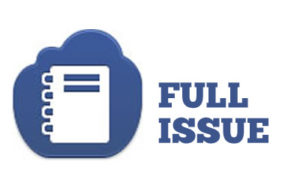 FOCUS: Wando Mount Pleasant Library is a library of the future
FOCUS: Wando Mount Pleasant Library is a library of the future
COMMENTARY, Brack: When something named “liberal” really isn’t
IN THE SPOTLIGHT: Charleston International Airport
GOOD NEWS: Big-time country star and prominent author celebrate America
FEEDBACK: Send you’re your thoughts
MYSTERY PHOTO: Hmmm, looks like another cemetery
S.C. ENCYCLOPEDIA: South Carolina during World War II
CALENDAR: The Pearl Theatre to offer its first production June 13-30
FOCUSFOCUS: Wando Mount Pleasant Library is a library of the future
By David Burt, special to Charleston Currents | When Wando Mount Pleasant Library celebrates its ribbon cutting on June 10, it will mark a new era in our libraries and the ways in which we interact with them.
The area’s original branch library was built in the 1970s, when a library was primarily dedicated to books: storing, organizing and sharing them. Card catalogues and date stamps may loom large in our memories; however, evolving technologies have brought new opportunities and a new paradigm of the library experience.
The new 40,000-square-foot facility on the corner of Carolina Park Boulevard and Park Avenue brings the library into the modern era with connectivity driving the design. The design aligns active spaces with the roadways to activate the facades, showcasing the library’s lively programming to the community. The form is a direct response to the site’s linear shape and the adjacent wetland to the northeast.
The exterior materials include indigenous brick of Savannah moss color, low-maintenance wood-like elements for warmth and texture, and expansive glazing to maximize transparency. The entry wall is bound together by white and black elements nodding to the printed word; the stone is pushed and pulled like books on a shelf.
The interior design is inspired by the nature of the site, with the gentle effects of filtered sunlight knit throughout the building. As guests travel through the library, the materials’ palette tells the “story” of nature. A textural wood plank wall mimics tree bark, while the adult area’s floor integrates the color gradations of a sweetgrass basket. The turquoise and blue ceiling in the young adult area flowing water, and the children’s wing plays on the question “how does the grass grow?”
Based on input from multiple community meetings in which members of the public shared wish lists for program spaces, adult areas and stacks feature small breakout spaces for contemplation and reading. Young adults have an age-appropriate enclave rather than a meld of kid/adult space. The children’s space features playful alcoves pushing beyond the boundaries of the wall, round skylights creating pools of light on the grass-colored carpet, and a titanium fish-scale oculus forming an inviting space to curl up with a book. Daylighting strategies minimize the need for artificial lighting, lowering energy use and creating a welcoming interior environment.
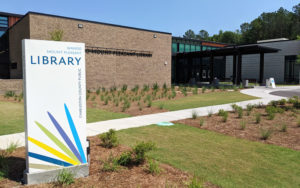 The high-tech interior features a glass-encased automated material handling system which transports and sorts books via conveyor belt and encourages families to watch the library in action. To accommodate evolving technologies, a raised access floor supports easy adaptations and flexible uses. Special program spaces encourage patrons to engage in their own high-tech projects with dedicated digital workspaces. These areas will support activities from family portraits to audio recordings to video editing. For hands-on types, makerspaces will accommodate creative projects.
The high-tech interior features a glass-encased automated material handling system which transports and sorts books via conveyor belt and encourages families to watch the library in action. To accommodate evolving technologies, a raised access floor supports easy adaptations and flexible uses. Special program spaces encourage patrons to engage in their own high-tech projects with dedicated digital workspaces. These areas will support activities from family portraits to audio recordings to video editing. For hands-on types, makerspaces will accommodate creative projects.
Other amenities include group study rooms, a multipurpose auditorium seating 250, mothers’ lounges, quiet areas, and conference rooms tailored to the needs of people who work from home and may enjoy readily-available spaces for client meetings and other entrepreneurial support options. Outside, an expansive patio and bermed seating around a favorite live oak tree create storytelling spaces. A bioswale at the window blurs the lines between inside and out.
LS3P’s Brian Wurst worked closely with Wando’s librarians and stakeholders to understand and design for the needs of the modern library.
“We wanted to create a place encouraging imagination, reflection, and access to multimedia information for a multigenerational user group,” Wurst explains. “We created more than 20 hand-drawn studies for the design and used them as conversation tools in order to engage with the librarians and let them help drive the location of the programs.”
David Burt is a vice president in Charleston at LS3P Associates, the architecture firm that designed the new library. Have a comment? Send to: editor@charlestoncurrents.com
COMMENTARYBRACK: When something named “liberal” really isn’t
By Andy Brack, editor and publisher | Millions of American students attending college for a classic liberal arts education don’t sit around watching MSNBC, attending Democratic Party meetings or reading The New York Times.
 Unfortunately, the word “liberal” in the three-word educational phrase has morphed into a pejorative term, often leading to misunderstandings for what’s intended to describe a broad-based education that expands how students understand and relate to the world.
Unfortunately, the word “liberal” in the three-word educational phrase has morphed into a pejorative term, often leading to misunderstandings for what’s intended to describe a broad-based education that expands how students understand and relate to the world.
“The word ‘liberal’ has become a political lightning rod, but a liberal arts education has nothing to do with left-leaning politics,” said Gibbs Knotts, interim dean of the School of Humanities and Social Sciences at the College of Charleston. “A liberal arts education prepares students to be better communicators, both orally and in writing. It exposes students to a wide range of disciplines in the humanities and social sciences, as well as in the arts and natural sciences.”
Winthrop University President Dan Mahony concurred, noting liberal arts education has nothing to do with being politically liberal or encouraging students to be more liberal politically.
“I would define a liberal arts education as one that is well-rounded and provides students with knowledge and skills across a variety of areas,” he said. “At its core, it focuses on developing a number of important skills including oral and written communication skills, problem solving skills, critical thinking skills, numerical skills, and many others.”
Mahony said he was a good example of why a well-rounded education was important. Throughout college, he trained as an accountant. After college, he lasted as an accountant for 13 months.
“I found the liberal arts aspect of my undergraduate education to be particularly useful to me as I moved through about three other careers and I appreciated that my institution required me to take a lot of liberal arts courses, including seven English courses — a lot for most accounting majors.”
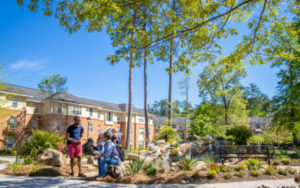 Colleges and universities often offer two tracks – the broad curriculum of study highlighted by Knotts and Mahony and more specific study of a professional discipline to develop a deep competency in a skill, such as engineering, But even undergraduate students who focus on courses to get into medical or law school generally are required to take broader courses in English, social sciences and math to ensure they get more of a well-rounded, or liberal arts, education.
Colleges and universities often offer two tracks – the broad curriculum of study highlighted by Knotts and Mahony and more specific study of a professional discipline to develop a deep competency in a skill, such as engineering, But even undergraduate students who focus on courses to get into medical or law school generally are required to take broader courses in English, social sciences and math to ensure they get more of a well-rounded, or liberal arts, education.
“A liberal arts education accommodates a curriculum which encompasses the arts, the natural and social sciences, humanities, philosophy, religion, literature, and languages,” said Francis Marion University President Fred Carter. “Of course, the finest liberal arts education doesn’t simply promote a curriculum, it inspires the independent and lifelong exploration of the knowledge it inspires.”
And Carter should know. He’s not the stereotype of a politically liberal college president. In fact, he served as a major policy adviser for GOP Gov. Carroll Campbell and chief of staff to GOP Gov. Mark Sanford. In between, he ran the old State Budget and Control Board during the tenure of Campbell and another Republican governor, David Beasley.
A broad, deep, liberal arts education, he says, helps political conservatives as well as those who are more liberal.
“Why would anyone even choose an ideology without a full understanding of the range of options and their implications for living a thoughtful and satisfying life?” he asked rhetorically. “And how could one possibly defend opinions without understanding the underpinnings upon which they’re built?”
For those in the education field, there’s not really an accepted synonym for the “liberal” part of the term “liberal arts education,” noted Mike Lefever, interim president and executive director of the state Commission on Higher Education.
“We don’t really say an ‘expansive arts’ or ‘comprehensive arts’ or ‘broad-based arts education,’” Lefever said. “If there is an alternative, talking generally about the benefits of arts and sciences may appeal to some, but there is always the need to define what exactly is ‘arts.’
“You would think that the really smart folks in the academy would have figured this out.”
So when we consider liberal arts education in a society where everything is more polarized, let’s remember we’re talking about educating students to think broadly and consider alternatives, not join a political party.
Andy Brack’s new book, “We Can Do Better, South Carolina,” is now available for $14.99 in paperback via Amazon.
- Have a comment? Send to: editor@charlestoncurrents.com
SPOTLIGHT: Charleston International Airport
 Today we shine a spotlight on Charleston International Airport, which provides a first impression of the Charleston metropolitan area to over 4 million passengers a year who visit for business and leisure activities. One of three public airports operated by the Charleston County Aviation Authority, Charleston International Airport is committed to providing an unparalleled passenger experience while continuing efforts to support economic development for the Lowcountry and State of South Carolina.
Today we shine a spotlight on Charleston International Airport, which provides a first impression of the Charleston metropolitan area to over 4 million passengers a year who visit for business and leisure activities. One of three public airports operated by the Charleston County Aviation Authority, Charleston International Airport is committed to providing an unparalleled passenger experience while continuing efforts to support economic development for the Lowcountry and State of South Carolina.
Eight airlines currently serve Charleston International Airport, which have jobs that create more than $200 million in income for workers in the region. Visiting passengers also spend about $450 million a year directly in area businesses, which sustains an estimated 6,000 jobs locally. The total economic impact of the Charleston International Airport is over $1 billion dollars to the Lowcountry and State of South Carolina.
- To learn more about Charleston International Airport, please visit com.
- To meet all of our underwriters, click here.
TUESDAY: Big-time country star, prominent author celebrate America
Staff reports | Grammy Award-winning Tim McGraw and Pulitzer Prize-winning author Jon Meacham will explore American history through music at a special 7:30 p.m. June 11 performance at Charleston Gaillard Center that promises to be a high point of the summer.
As they publish their new joint book, Songs of America, Meacham and McGraw are giving an intimate, behind-the-scenes look at what went into creating this book and their friendship as they combine their individual perspectives as writer and artist to create a unique view of the role music has played in uniting and shaping our nation.
Whether you are a Republican, a Democrat, conservative or liberal, the Songs of America Book Tour will be both illuminating and entertaining. To add to the evening, the audience will get some special musical performances of songs from the book by McGraw. Every ticket includes a copy of Songs of America: Patriotism, Protest, and the Music That Made a Nation (a $30 value). Tickets cost $65 to $350. Learn more.
In other Good News:
![]() Summer reading. Charleston County Public Library again offers a rich summer reading program for children, teens and adults now through Aug. 17. All can win prizes in the program. Students in Charleston County public schools has been automatically registered. Kids ages 11 and younger earn prizes for reading or listening to stories. Rewards are distributed to kids who complete five, 15 and 30 hours of reading, and prizes include the S.C. Reading Medal, a RiverDogs game pass, vouchers for local attractions, and more. Students entering grades 6 to 12 can win cool prizes for reading whatever they like. Prizes include free food, passes to local attractions, and gift cards. Participants ages 18 and older are eligible for bi-monthly gift card prizes and a grand prize drawing. “Studies show that students who don’t read during the summer will be less prepared when school resumes,” said CCPL Executive Director Angela Craig. “The school district and CCPL are proud to work together to keep children engaged and fight the summer slide.”
Summer reading. Charleston County Public Library again offers a rich summer reading program for children, teens and adults now through Aug. 17. All can win prizes in the program. Students in Charleston County public schools has been automatically registered. Kids ages 11 and younger earn prizes for reading or listening to stories. Rewards are distributed to kids who complete five, 15 and 30 hours of reading, and prizes include the S.C. Reading Medal, a RiverDogs game pass, vouchers for local attractions, and more. Students entering grades 6 to 12 can win cool prizes for reading whatever they like. Prizes include free food, passes to local attractions, and gift cards. Participants ages 18 and older are eligible for bi-monthly gift card prizes and a grand prize drawing. “Studies show that students who don’t read during the summer will be less prepared when school resumes,” said CCPL Executive Director Angela Craig. “The school district and CCPL are proud to work together to keep children engaged and fight the summer slide.”
Learn more: Visit ccpl.org/summeronline to view the children’s Summer Reading program guide, which lists all the free and fun events scheduled throughout the summer or pick one up at our local branch.
Outdoor classroom. On each Saturday in June, the Children’s Garden at Magnolia Plantation and Gardens will become a hands-on outdoor classroom where children can experience science and nature. Saturday activity will include a Bird Day on June 15; Prehistoric Jam, June 22; and Kidz Karnival with magician John Tudor, June 29. Activities will be held from 11 a.m. to 2 p.m. Free with paid garden admission.
Congratulations. A hat tip to the Sea Islands Chamber of Commerce, which turns nine years old on June 18. To celebrate, the chamber is hosting an after-hours event at its office from 5 p.m. to 7 p.m. June 18 with beer, wine, food and drawings for prizes. RSVP to: info@seaislandchamber.org. Location: 2817 Maybank Highway, Unit 1, Johns Island, S.C.
Another big hat tip. Congratulations to the Charleston Beer Fest , which was attended May 18 in Riverfront Park in North Charleston by more than 4,100 people. This year’s festival, presented by Tabor Mortgage Group, generated more than $140,000 for the nonprofit Palmetto Community Care to fund its work in providing complete compassionate HIV care and prevention education awareness across the tri-county area. More.
Updated website. The City of Charleston has a new website designed to make city services and information more accessible and mobile-friendly, particularly for tablets, smartphones and other electronic devices. “With the launch of the redesigned, mobile-friendly website this morning, we are continuing our commitment to communicate more effectively with our citizens,” Mayor John Tecklenburg said last week. “The new website, new Citizen Services Desk, new city app and more new technologies on the way also provide citizens more efficient and responsive access to city services and representatives.”
Back to Columbia. State legislators will head back to Columbia at the end of the month to deal with a handful of gubernatorial budget vetoes, but it’s still not clear why they are doing this now, instead of doing what they recently did — wait until the traditional start of the session in January. Read more.
Unaffordable housing. The state House of Representatives is taking a look this summer at how the state agency that deals with affordable housing is actually doing. It’s also been more than 15 years since an assessment has been done (the agency is working on that now). According to this story by sister publication correspondent Lindsay Street, “S.C. Rep. Mandy Powers Norrell, D-Lancaster, who serves on the subcommittee told Statehouse Report she is “reserving judgment” about SC Housing, but added there were “some concerns” without elaborating.’
FEEDBACKSend us your thoughts
We’d love to get your impact in one or more ways:
Send us a letter: We love hearing from readers. Comments are limited to 250 words or less. Please include your name and contact information. Send your letters to: editor@charlestoncurrents.com. | Read our feedback policy.
Tell us what you love about the Lowcountry. Send a short comment – 100 words to 150 words – that describes something you really enjoy about the Lowcountry. It can be big or small. It can be a place, a thing or something you see. It might the bakery where you get a morning croissant or a business or government entity doing a good job. We’ll highlight your entry in a coming issue of Charleston Currents. We look forward to hearing from you.
MYSTERYLooks like another cemetery
We must be on a cemetery tour or something because here’s another mysterious graveyard. Where is it? Send your guess to editor@charlestoncurrents.com. And don’t forget to include your name and the town in which you live.
Our previous Mystery Photo
 Our June 3 mystery, “This one could be tough,” turned out to be pretty easy for several familiar sleuths who identified the photo the cemetery across from St. Philip’s Church in Charleston. The big clue, of course, as the tomb of John C. Calhoun.
Our June 3 mystery, “This one could be tough,” turned out to be pretty easy for several familiar sleuths who identified the photo the cemetery across from St. Philip’s Church in Charleston. The big clue, of course, as the tomb of John C. Calhoun.
Congratulations to Paul Hedden on James Island; Bud Ferillo of Columbia; George Graf of Palmyra, Va.; Eric Hansel, James McMahan, and Wes Richburg, all of Charleston; Marnie Huger of Richmond, Va.; and Don Clark and Bill Segars, both of Hartsville.
Graf added, “According to genealogytrails.com: Known as the lighthouse church because a light placed in its steeple helped guide ships to port, St. Philip’s was constructed 1835-38. Charlestonians are buried in the graveyard next to the church. Non-Charlestonians, including John C. Calhoun, are buried on across the street.”
- Send us a mystery: If you have a photo that you believe will stump readers, send it along (but make sure to tell us what it is because it may stump us too!) Send it along to editor@charlestoncurrents.com.
HISTORY: South Carolina in World War II
Editor’s Note: With the nation recently recalling the sacrifice and heroism of those who stormed French beaches 75 years ago on D-Day, we thought it was a good time to remember how South Carolina participated in the war.
S.C. Encyclopedia | Prior to the entry of the United States into World War II, the depressed South Carolina economy had already started to recover. Federal money constructed or expanded military and naval installations across the state, including Camp Croft in Spartanburg, Fort Jackson in Columbia, the Charleston Navy Yard, and several smaller bases. Economic expansion centered in major urban centers. Large population increases occurred during the war years in Charleston County (33 percent), Richland County (11 percent), and Greenville County (3 percent). But South Carolina’s total population changed little from 1940 to 1944, remaining about 1,890,000. While thousands left the state for military duty or jobs in other states, an equal number of outsiders came to South Carolina.
The war brought a much-needed boost to South Carolina’s agricultural sector, which had struggled since the early 1920s. Agricultural wages in the state more than doubled between 1939 and 1943 as state farmers tried to keep up with war-time demands for cotton and produce. Despite the dramatic increase, farm wages in South Carolina still lagged behind those in the rest of the country, and many farmers faced significant labor shortages. These shortages were partially alleviated by employing German prisoners of war (POWs) on farms in such counties as Aiken, Greenwood, and Marlboro. Seasonal camps of from two hundred to four hundred POWs were constructed in these and other counties between 1943 and 1945, with a central camp for nearly two thousand prisoners placed at Fort Jackson in 1944.
In the textile industry, increases in production and the labor force occurred as manufacturers successfully met war-time production goals. Cotton consumption by textile mills increased more than 60 percent between 1939 and 1943. But heavy war industries, such as aircraft plants in Georgia and weapons plants in North Carolina, did not exist in South Carolina. The closest to such industries in the state was the Charleston Navy Yard, which produced more than three hundred medium-size and small vessels while repairing numerous others. Aiding the yard were small steelworks, such as Kline Iron and Steel in Columbia and Carolina Industries of Sumter, which built ship components and then delivered them to Charleston for assembly. Military bases across the state also gave employment to civilians, who provided services, repairs, and construction expertise.
Estimates are imprecise, but at least 900,000 men received military training in South Carolina during the war. More than 180,000 South Carolinians, including 2,500 women, entered the armed services. More were willing to serve, but forty-one percent of those examined statewide were rejected for various mental or physical problems, making the recruit rejection rate in South Carolina the second highest in the nation. Civilian defense began to organize in South Carolina more than a year before Pearl Harbor. By summer 1941, the State Council of Defense was soliciting 12,500 aircraft spotters for eight hundred posts across South Carolina. In the last months of the war, the council claimed that more than 250,000 South Carolinians had volunteered for duties ranging from serving as nurses’ aides and salvage workers to providing war bond activities and aircraft spotting.
South Carolinians contributed to the war effort in other ways as well, especially through rationing. Tire rationing began less than a month after Pearl Harbor, with just 2,921 tires allotted the entire state for January 1942. Six months later, gas rationing began on the East Coast, and many in South Carolina grumbled about bearing the brunt of this war measure. By 1943, the entire nation was under the same restrictions. This system reduced gas consumption for private cars to between three and four gallons every two weeks for the remainder of the war. In March 1943, nationwide food rationing began. Under the mandatory system coordinated through the federal Office of Price Administration, all canned and processed foods were severely rationed, as were red meat, sugar, and coffee. Foods exempted by the rationing board were fresh vegetables and fruits as well as seafood. Victory gardens were successfully promoted in cities and towns to supplement family needs, so that by 1943 more than 330,000 plots were reported across the state.
With housing rents rising even before Pearl Harbor, many cities and towns had to impose rent controls early in the war. While Columbia imposed them less than a year after the Japanese attack, the housing shortage in Charleston became so acute by 1940 that the navy established a city clearinghouse. This helped, but housing remained scarce and complaints grew that local landlords and residents were gouging the public. The housing shortage along with problems in food distribution and labor needs forced the federal government to list Charleston as one of eighteen cities in the nation considered Congested Production Areas that needed special assistance. Greenville and Spartanburg also faced shortages, but to a lesser degree.
Amid war-time conditions, segregation laws came under pressure. The influx of non–South Carolinians with different ideas on social customs led to temporary changes, especially on military bases. Nevertheless, African Americans remained at the bottom rung of the social ladder. Although some minorities gained promotions to skilled jobs, most of these went to recent arrivals. Segregated United Service Organizations, restaurants, and movie houses remained standard throughout the war. When reports reached South Carolina congressmen about “violations” of southern traditions on military installations, those congressmen did not hesitate to protest. U.S. Senator Burnet Maybank wrote a strong objection to the captain of the Charleston Navy Yard after a constituent protested that blacks were working alongside whites and that some minorities were getting promotions above whites.
Although segregation would remain entrenched in the early postwar period, seeds of change were planted during the war, particularly through landmark court decisions. In 1944 the federal district court ordered South Carolina to provide equal salaries to black and white teachers. In the same year, in the case of Smith v. Allright, the U.S. Supreme Court ruled the all-white primary unconstitutional. Politicians in the state, led by Governor Olin D. Johnston, fought these and subsequent court rulings, but African Americans in South Carolina were slowly but steadily gaining voting rights by the end of the war. Between 1940 and 1946, the number of registered African American voters in the state increased from 1,500 to 50,000.
As the war ended, most white South Carolinians expected prewar social customs to remain. These hopes were mixed with fears of an economic depression like the one that followed World War I. Fortunately, although some military bases closed and others downsized, the GI Bill helped maintain a strong economy by providing low-interest loans and free education to former servicemen. Thousands of veterans entered the University of South Carolina and other state schools in the immediate postwar years. As the cold war accelerated by the early 1950s, several bases on the verge of closing gained new life and expanded as the nation retooled to confront the threat of global communism.
— Excerpted from an entry by Fritz Hamer. This entry may not have been updated since 2006. To read more about this or 2,000 other entries about South Carolina, check out The South Carolina Encyclopedia, published in 2006 by USC Press. (Information used by permission.)
ON THE CALENDARCALENDAR: The Pearl Theatre to offer its first production June 13-30
Staff reports | Charleston Stage’s first show produced at its new Pearl Theatre in West Ashley opens June 13 and runs through June 30.
You’ll love the hilarious whodunit, Shear Madness, the longest-running play in American theatre history. You’ll be able to follow the trail of clues and get to vote on each turn in the road in a hilarious murder mystery unlike any you have ever seen.
For more than 30 years, this comic gem has been delighting audiences in Washington, Boston, Chicago and other select cities, and this season, will be produced at The Pearl Theatre in Charleston Stage’s new West Ashley Theatre Center! With audiences spotting the clues, questioning the suspects and joining the cast in solving the crime, there could be a new ending every performance! Location: The Pearl Theatre, 1401 Sam Rittenberg Blvd, Charleston.
Also on the calendar:
![]() Events at the Gaillard. Check out these awesome coming events at the Charleston Gaillard Center, 95 Calhoun St., Charleston:
Events at the Gaillard. Check out these awesome coming events at the Charleston Gaillard Center, 95 Calhoun St., Charleston:
Songs of America: Jon Meacham and Tim McGraw: 7:30 p.m., June 11. Join Grammy Award-winning Tim McGraw and Pulitzer Prize-winning author Jon Meacham as they explore American history through music. Tickets are $65 to $350. More.
TheSkimm Night Out. 7:30 p.m., June 25. The founders of theSkimm are coming to your city for a fun night out, full of empowering conversation, networking, cheersing, and more to celebrate their new book, How to Skimm Your Life. Tickets are $48 to $150. More.
Frankie Valli and The Four Seasons: 7:30 p.m., June 29. Join the legendary Frankie Vallie and the Four Seasons, which had 71 chart hits through the years, at this show that will show the group is hotter than ever. Remaining tickets start at $78.
Presidential candidates here for TV: The Black Economic Alliance will host a presidential forum noon to 4 p.m. June 15 for some Democratic candidates at the Charleston Music Hall. Tickets required, but free. To be aired on BET.
Hat Day in the Sun: 11:30 a.m., June 21, Marion Square, King Street, Charleston. Once again, the Hat Ladies will be distributing FREE hats to men, women and children to emphasize the importance of hat wearing for sun protection. They’ll hand out hats as long as supplies last; one hat per customer. More: www.hatladies.org.
Charleston Carifest: June 20 to June 23, Charleston. This Caribbean carnival celebration honors Caribbean American Heritage Month with four days of food, fun, music, costumes and more. On June 20, there’s an opening reception starting at 6 p.m. at the College of Charleston’s north area campus, followed by a fete on June 21 at the Cannon Street Arts Center. On June 22, there will be a parade that starts at 4 p.m. at King and John streets and leads to Brittlebank Park. On June 23, there’s a brunch at Cannon Street Arts Center. More info.
Lecture on Washington: 6:30 p.m., June 27, Charleston Museum, 360 Meeting St., Charleston. David L. Preston, a professor of national security studies at The Citadel, will deliver a lecture titled, “Why George Washington’s leadership still matters.” Hosted by the American Revolution Institute, a reception will start 45 minutes before the lecture. You can register online and need to do so by June 20. Cost: $25.
Food truck Friday: 5 p.m. to 8 p.m., June 28, The Ponds, 326 Hundred Oak Parkway, Summerville. You can enjoy food and popular gatherings with entertainment from Ocean Drive and several food trucks, including Smokin’ Gringos, Happy Thai, Greekin Out, Krystyna’s, Holy City Cupcakes, Booze Pops, and Pelican Sno Balls. It is recommended that attendees bring chairs and blankets. Coolers and BYOB are allowed.
Prince of Scribes Writers Conference: 10 am. to 6 p.m., June 29, Charleston Circular Church, 150 Meeting St., Charleston. Contributing editor Marjory Wentworth is among the writers in this all-day event featuring four workshops and a panel discussion remembering author Pat Conroy. Cost: $50, and includes a closing reception. Learn more and register.
Early morning bird walks at Caw Caw: 8:30 a.m. every Wednesday and Saturday, Caw Caw Interpretive Center, Ravenel. You can learn about habitats and birds, butterflies and other organisms in this two-hour session. Registration not required, but participants are to be 15 and up. $10 per person or free to Gold Pass holders. More: http://www.CharlestonCountyParks.com.
AREA MARKETS
![]() TUESDAYS. The Mount Pleasant Farmers Market is every Tuesday from 3:30 p.m. to 7 p.m. at the market pavilion at Moultrie Middle School, 645 Coleman Blvd., Mount Pleasant. Free parking. Lots of activities. More info.
TUESDAYS. The Mount Pleasant Farmers Market is every Tuesday from 3:30 p.m. to 7 p.m. at the market pavilion at Moultrie Middle School, 645 Coleman Blvd., Mount Pleasant. Free parking. Lots of activities. More info.
WEDNESDAYS. The West Ashley Farmers Market is every Wednesday from 3 p.m. to 7 p.m. in Ackerman Park off Sycamore Avenue in West Ashley. The last week of the market will be the first week of October. More.
FRIDAYS/SATURDAYS: Night Market. Every Friday and Saturday from 6:30 p.m. to 10:30 p.m. for the rest of the year, you can shop with 108 vendors, including artists and craftsmen, at the night market on Market Street between East Bay and Church streets. It’s more than four blocks of local shopping and fun. Free.
SATURDAYS: Johns Island Farmers Market operates each Saturday from 9:30 a.m. to 1:30 p.m. year-round with more than 50 local farmers and vendors, food trucks, music and more. The market is located on the campus of Charleston Collegiate School, 2024 Academy Road, Johns Island
SATURDAYS: The Charleston Farmers Market is opens 8 a.m. to 2 p.m. in Marion Square each Saturday through Nov. 30. More info.
- If you have an event to list on our calendar, please send it to feedback@charlestoncurrents.com for consideration. The calendar is updated weekly on Mondays.
 If you like what you’ve been reading, how about considering a contribution so that we can continue to providing you with good news about Charleston and the Lowcountry. Interested? Just click the image below.
If you like what you’ve been reading, how about considering a contribution so that we can continue to providing you with good news about Charleston and the Lowcountry. Interested? Just click the image below.
Now out in paperbrack, err, paperback
 We Can Do Better, South Carolina! offers incisive commentaries by editor and publisher Andy Brack on the American South, the common good and interesting South Carolina leaders, such as former U.S. Sen. Fritz Hollings, civil rights advocate Septima Clark, former S.C. Gov. David Beasley and more. There also are discussions on civil rights struggles with which the Palmetto State continues to grapple. as well as commentaries on politics, governments, the hangovers of South Carolina’s past and her future opportunities.
We Can Do Better, South Carolina! offers incisive commentaries by editor and publisher Andy Brack on the American South, the common good and interesting South Carolina leaders, such as former U.S. Sen. Fritz Hollings, civil rights advocate Septima Clark, former S.C. Gov. David Beasley and more. There also are discussions on civil rights struggles with which the Palmetto State continues to grapple. as well as commentaries on politics, governments, the hangovers of South Carolina’s past and her future opportunities.
We Can Do Better, South Carolina! is available for $14.99 in paperback or as a Kindle book for $7.99. Click here to purchase your copy. A paperback version will be ready for order soon.
- If you have a comment or questions about the book, please let us know at: editor@charlestoncurrents.com
OUR UNDERWRITERS
Charleston Currents is an underwriter-supported weekly online journal of good news about the Charleston area and Lowcountry of South Carolina.
- Meet our underwriters
- To learn more about how your organization or business can benefit, click here to contact us. Or give us a holler on the phone at: 843.670.3996.
OUR TEAM
Charleston Currents offers insightful community comment and good news on events each week. It cuts through the information clutter to offer the best of what’s happening locally.
- Mailing address: O. Box. 22261 | Charleston, SC 29413
- Phone: 670.3996
Charleston Currents is provided to you weekly by:
- Editor and publisher: Andy Brack, 843.670.3996
- Contributing editor, common good, Fred Palm
- Contributing editor, money: Kyra Morris
- Contributing editor, Palmetto Poem: Marjory Wentworth
- Contributing editor, real estate: Digit Matheny
- Contributing editor, AT: Jerry Adams
- Contributing photographer: Rob Byko
SUBSCRIBE FOR FREE
Subscriptions to Charleston Currents are free.
- Click here to subscribe.
- We don’t want to lose you as a reader of Charleston Currents, but if you must unsubscribe, you will have to do it through the email edition you receive. Just go to the bottom of any of your weekly newsletters and click the “unsubscribe” function. If that doesn’t work, please send us an email with the word “unsubscribe” in the subject line.
- © 2008-2019, Statehouse Report, LLC. All rights reserved. Charleston Currents is published every Monday by Statehouse Report LLC, PO Box 22261, Charleston, SC 29413.



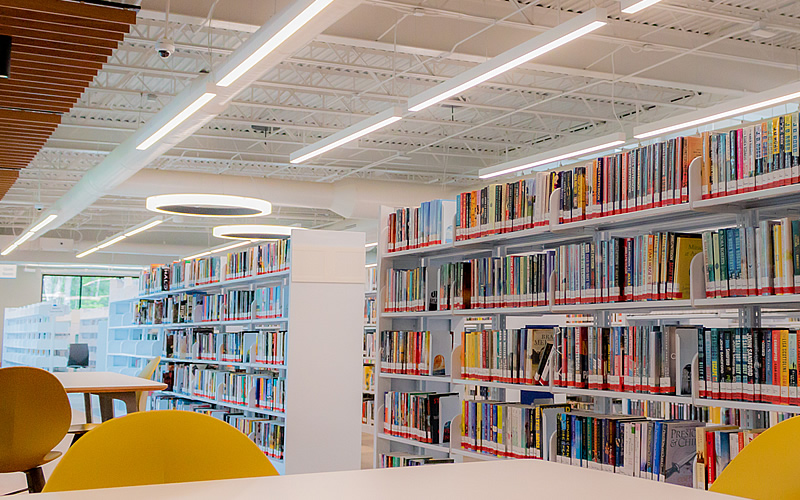

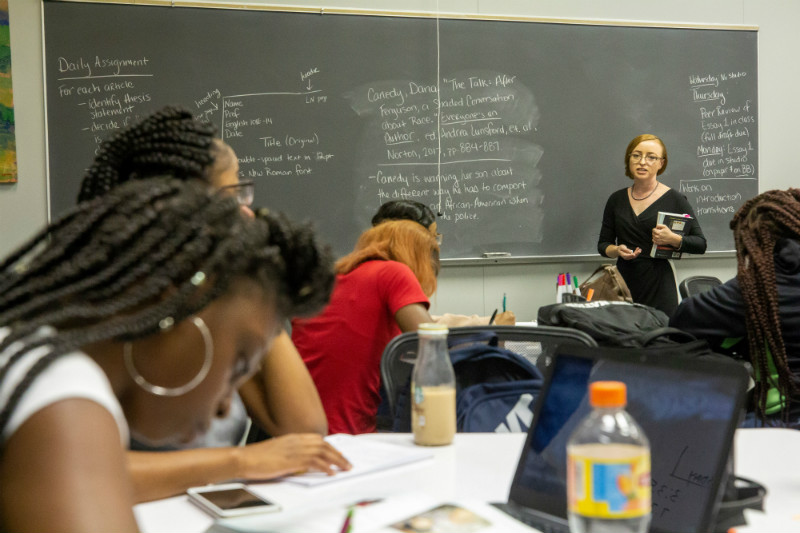

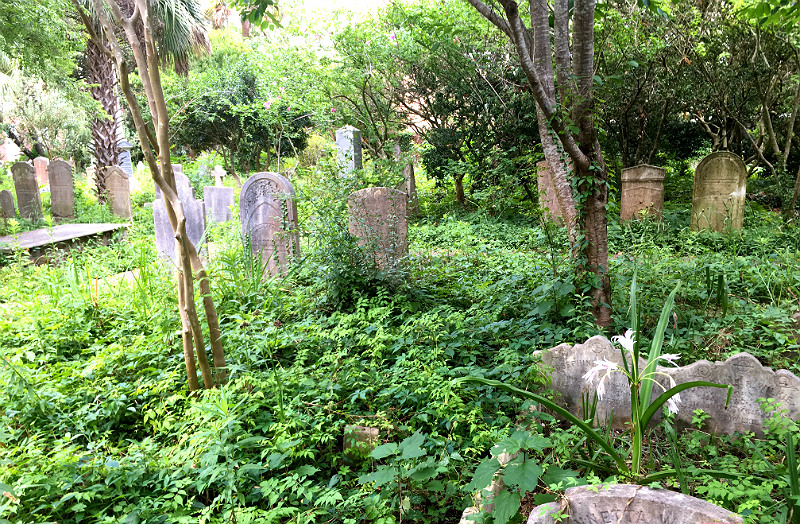
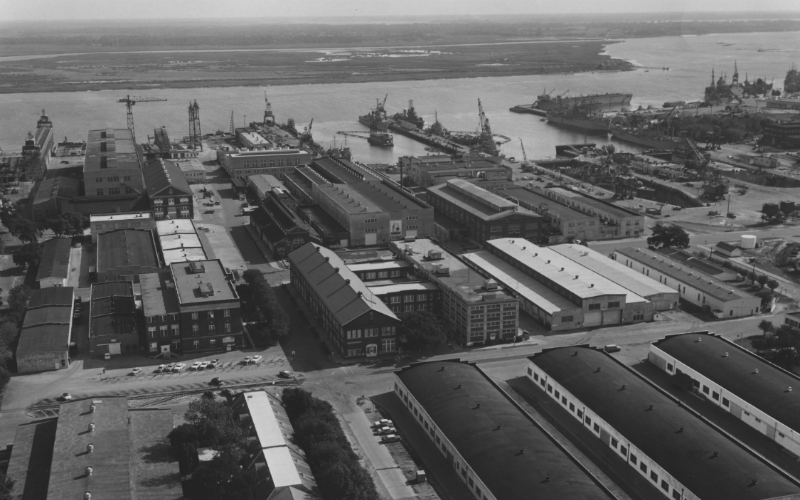
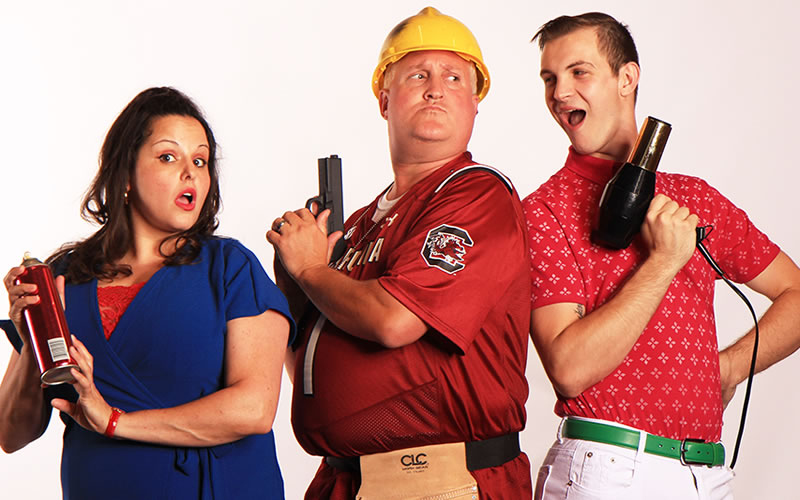

 We Can Do Better, South Carolina!
We Can Do Better, South Carolina!
























